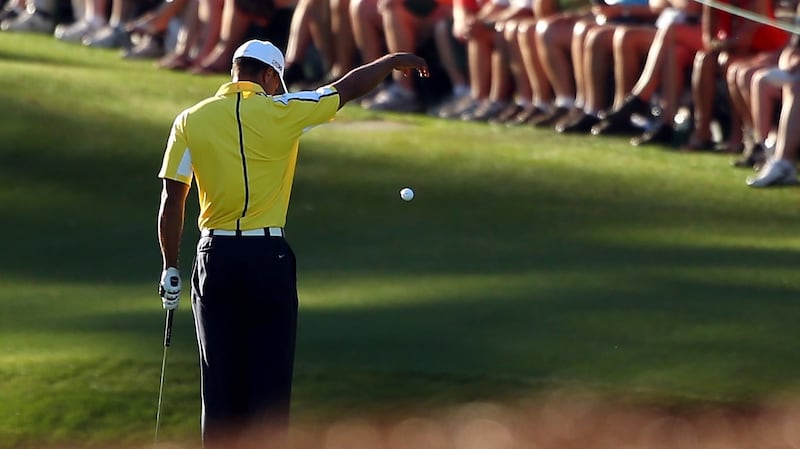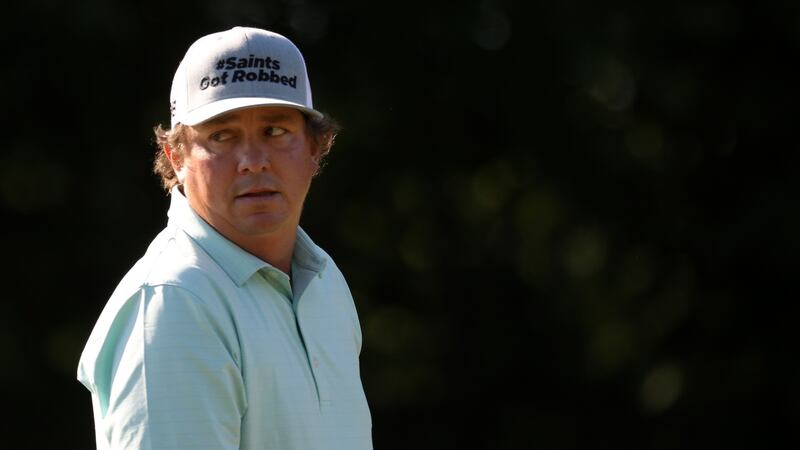It began innocuously enough. Brandel Chamblee recently offered the opinion that Brooks Koepka was not quite on the same level as Tiger Woods, Dustin Johnson and Rory Mcllroy. Standard fodder for bar-stool debate, hardly an earth-shattering contention.
Still, Koepka, current world number three, winner of three of the last seven majors he’s played, took umbrage and responded by tweeting a photograph of the pundit with a clown nose photoshopped onto his face. The haughty level of public discourse we have reached in the glorious social media age.
“I think Brooks is a helluva player,” said Chamblee, who had previously described Koepka shedding 24 pounds of weight an act of “self-sabotage”.
“I’ve said so I don’t even know how many times. He certainly wasn’t putting a clown nose on my face when I was lauding him all these years. But it becomes my job to make relative judgment.”
An analyst on the Golf Channel, Chamblee is the rarest of things in the cosiest of sports: somebody willing to ruffle feathers, an entertaining tendency that inevitably causes controversy. Some, including John Feinstein, regard him as the most astute voice on American television just now.
Chamblee had broken the cardinal rule of televised golf coverage in America: Thou shalt not ever besmirch the public image of the sport
Others, to quote Woods, reckon his schtick is more “for people who don’t play the game”. The Masters’ champion might be a little biased in that rather supercilious assessment, because, like Mcllroy, Phil Mickelson and just about every contender at Bethpage Black this weekend, he’s been embroiled in a very public spat of his own with Chamblee.
‘Cavalier’
In a 2013 end-of-year review for Golf.com, Chamblee catalogued four instances where Woods had been, as he put it, “cavalier with the rules” during tournaments, citing, among other specific offences, an illegal free drop at the Abu Dhabi Championship, and avoiding disqualification at the Masters despite signing an incorrect scorecard following another illegal drop. While nothing he wrote was untrue, it looked as if likening Woods’ behaviour to his own cheating on a math test at age nine might actually cost him his television gig.

That he was morally and factually correct mattered little because Chamblee had broken the cardinal rule of televised golf coverage in America: Thou shalt not ever besmirch the public image of the sport. In a corner of the sporting world where every camera lens must be smudged in Vaseline, every commentary dipped in syrup, and every microphone equipped with an in-built criticism filter, deviating from the standard obsequiousness towards players – and, of all things, questioning the character of Woods – was unacceptable.
Even if Chamblee subsequently went through the motions with what looked like a “job-saving” and rather cringeworthy apology (“Comparing that to cheating in school went too far”), he has continued to deliver actual insight and occasional provocative opinions. On the Golf Channel, a network which most of the time is the sport’s equivalent of state-run TV, these outbreaks of candour have made him persona non grata among many of the leading pros, a thin-skinned bunch at the best of times.
The list of players to call him out is long and growing.
Weight-lifting
Rory has got into it with him on a couple of occasions, once for questioning the wisdom of his Tiger-esque weight-lifting regime, then for making an incorrect assertion about the efficacy of hitting up rather than down on the ball with a driver. Jason Dufner had a back-and-forth on Twitter about criticism of his swing coach that culminated in advice “to shut your f***ing mouth!”

Mickelson has never been a fan and denounced him for carving out a career “denigrating others”. And, in a memorable on-camera encounter, David Duval questioned his right to lambast the woeful performance of America’s Ryder Cup players because he’d never played in that arena himself. A pathetic jibe given Chamblee’s honest appraisal of his own pedigree.
I felt privileged to have had a front-row seat to watch the world's best golfers and, on occasion, compete with them
“I’ll never forget walking up the 18th fairway at Muirfield in the 1987 British Open with Sam Torrance, who had been such a hero at the ’85 Ryder Cup that he got a standing ovation from tee to green,” said Chamblee. “When I dropped behind Sam as he approached the green, he turned around and said, ‘What are you doing? Walk up here with me.’ I said, ‘No, no, go ahead.’
“But he replied, ‘Aw, f*** it. Walk alongside me and pretend they’re cheering for you.’ So I did, and that’s kind of how I view my career. I felt privileged to have had a front-row seat to watch the world’s best golfers and, on occasion, compete with them.”
Journeyman pro
He was a classic journeyman pro, a profile that often, a la Eamon Dunphy, lends itself to excellence in punditry. Trousering $4 million in prize money over 15 years, he won once on the PGA Tour and managed to share the lead at the end of the first round of his only Masters.
What is there to argue about in golf? I mean, besides the fact I am still paid to talk about it for a living
The death of his infant son prompted him to re-evaluate his time away from his family and, when periodic appearances on television started to get rave reviews, he opted to move full-time from the course to the studio in 2003. He’s been annoying players and dividing fans into those who love him and those who loathe him ever since.
“I can understand the discord involving politics, religion and war, but what is there to argue about in golf?” asked Chamblee. “I mean, besides the fact I am still paid to talk about it for a living.”
Exactly.












